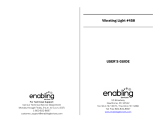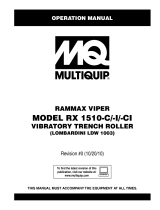
Table of contents
5100038508IVZ.fm 5
1 CALIFORNIA Proposition 65 Warning .................................................................................3
2 Preface ....................................................................................................................................7
3 Introduction ............................................................................................................................8
3.1 Using the manual......................................................................................................................... 8
3.2 Storage location of the manual.................................................................................................... 8
3.3 Accident prevention regulations................................................................................................... 8
3.4 More information.......................................................................................................................... 8
3.5 Target group................................................................................................................................ 8
3.6 Explanation of symbols................................................................................................................ 8
3.7 Wacker Neuson Contact partner ................................................................................................. 9
3.8 Disclaimer.................................................................................................................................... 9
3.9 Product identification of the machine........................................................................................... 9
4 Security ................................................................................................................................10
4.1 Policy......................................................................................................................................... 10
4.2 Proper use................................................................................................................................. 10
4.3 Structural changes..................................................................................................................... 10
4.4 Areas of responsibility of the operator....................................................................................... 11
4.5 Operator responsibilities............................................................................................................ 11
4.6 Personnel qualification............................................................................................................... 11
4.7 Residual dangers....................................................................................................................... 11
4.8 General safety instructions........................................................................................................ 11
4.9 Specific safety instructions – Vibratory plates ........................................................................... 12
4.10 General safety instructions – Fuel, lubricants and coolants ...................................................... 14
4.11 Maintenance.............................................................................................................................. 14
4.12 General safety instructions - Rechargeable battery (accessories)............................................ 14
4.13 General safety instructions - Battery charger (accessories)...................................................... 15
4.14 Personal Protective Equipment ................................................................................................. 16
4.15 Behavior in dangerous situations............................................................................................... 17
5 Safety and information labels ............................................................................................18
6 Setup and function ..............................................................................................................20
6.1 Standard package ..................................................................................................................... 20
6.2 Application areas....................................................................................................................... 20
6.3 Short description........................................................................................................................ 20
6.4 Versions..................................................................................................................................... 20
7 Components and operator's controls ................................................................................21
7.1 Components .............................................................................................................................. 21
7.2 Operator's controls .................................................................................................................... 21
7.3 Components and operator's controls of the rechargeable battery (optional)............................. 22
7.4 Components and operator's controls of the battery charger (optional)...................................... 22
8 Transport ..............................................................................................................................23
8.1 Loading and transporting the machine ...................................................................................... 23
8.2 Packaging and transporting the rechargeable battery............................................................... 24
8.3 Transporting the battery charger ............................................................................................... 24
9 Storage .................................................................................................................................24
9.1 Specific storage - Rechargeable battery.................................................................................... 24
10 Operation and use ...............................................................................................................25
10.1 Before commissioning ............................................................................................................... 25
10.2 Notes about operation ............................................................................................................... 26
10.3 Commissioning.......................................................................................................................... 27
10.4 Operation................................................................................................................................... 28
10.5 Decommissioning ...................................................................................................................... 28
Inhalt























